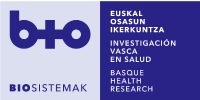Assessment of the effectiveness and cost-effectiveness of an intervention in hospitalised patients with disease-related malnutrition.
Project:
Assessment of the effectiveness and cost-effectiveness of an intervention in hospitalised patients with disease-related malnutrition.
Project description:
Objetive:
Assess the effectiveness and cost-effectiveness of three hospitalised patient care strategies in relation to disease-related malnutrition (DRM) based on results such as days of stay of the index admission, and assessment of the mortality rate, complications, changes in weight and nutritional status, changes in their quality of life related to health and functional status, re-admissions, use of health resources (GP visits, hospital and emergency room visits) and costs from the time of their admission to one year after hospitalisation.
Methodology:
Design:
After nutritional screening in all the selected patients and centres, three branches (three prospective cohorts) are evaluated. The first branch includes an intervention in groups of patients who, after screening, are identified as having disease-related malnourishment (DRM) or who are at risk of DRM, and a follow-up of the rest of the patients. The second cohort/branch includes patients in whom the intervention, if any, is performed on demand by the medical staff responsible for each patient. The third branch/cohort follows the normal hospital protocol without any explicit intervention, except for the screening carried out on all branches.
Scope:
Three health centres belonging to Osakidetza. The first centre, where the intervention will take place (branch 1), is the Galdakao – Usánsolo Hospital (HGU). It currently cares for a population of around 300,000 urban and semi-urban inhabitants. The second centre is the Basurto University Hospital (HUB), where the on-demand intervention will be carried out (branch 2). It provides healthcare assistance to the population of Bilbao, about 350,000 urban inhabitants. The third centre is the Donostia University Hospital (HUD), where no organised intervention will be carried out (branch 3). This hospital usually cares for the population of San Sebastián-Donostia and the surrounding area, covering a population of about 400,000 urban and semi-urban inhabitants. All three have similar human and technological resources, and the population they serve has similar sociodemographic and clinical characteristics.
Study subjects:
For this study, two large groups of patients have been selected: some subjects are from the surgical field, while others are from the medical field. They will be recruited simultaneously and coordinately at all three centres.
Funding body:
This project is co-financed by Carlos III Health Institute, European Regional Development Fund (ERDF)-”A way to make Europe”.
Amount financed: €128,260

